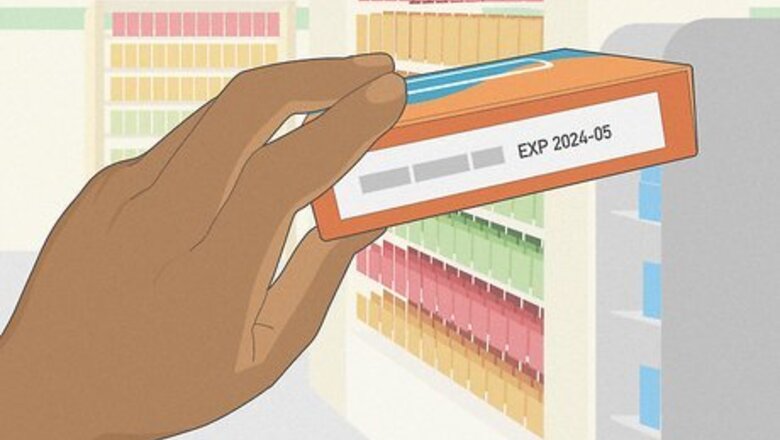
views
Starting Out Right
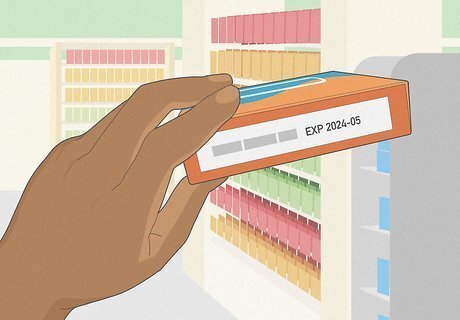
Check the expiration date on the box at the store. Look before you buy to make sure that the condoms you're about to purchase haven't expired. Do not purchase or use expire condoms. Expiration dates should have a month and year. Expired condoms weaken over time and may easily break. Do not use an expired condom.
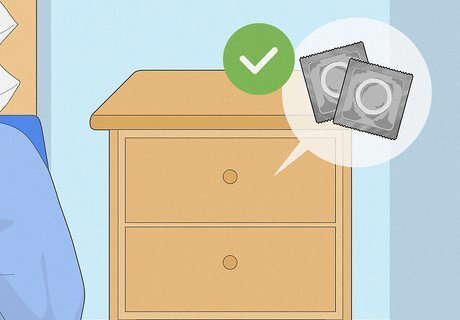
Store the condoms properly. Keep your condoms in a cool, dry place, away from heat and sunshine. Also, don't shove them in your wallet where they can be crumpled and bent. Never place condoms in the back pocket of your pants. Sitting on condoms may damage them.

Keep condoms out of the glove compartment of your car. The temperature in your car may range from hot, to cold, to humid and this can cause damage to condoms.
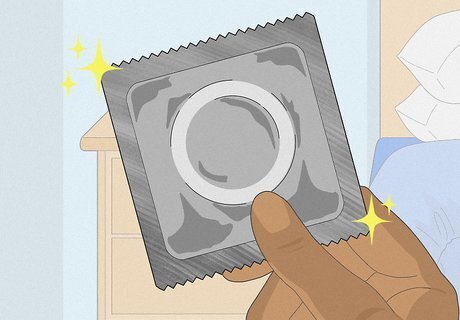
Use a new condom each time. Never reuse a condom. Repeated use can cause breakage and leftover bodily fluids may also leak out. Throw away the condom after you use it and get a new one the next time you need one.
Inspecting The Goods
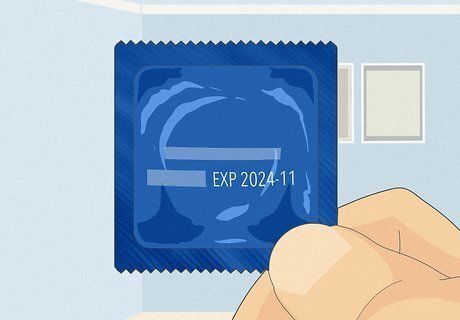
Check the expiration date of the individually wrapped condom. Even if you purchased the condoms recently, check the expiration date before you use one. If the condom has expired, then do not use it. An expired condom is more likely to break than one that is in date.

Look at the condition of the packaging. There should be no tears or holes in the package. If there is a hole in the wrapper, the condom may have dried out, rendering it ineffective and likely to break.
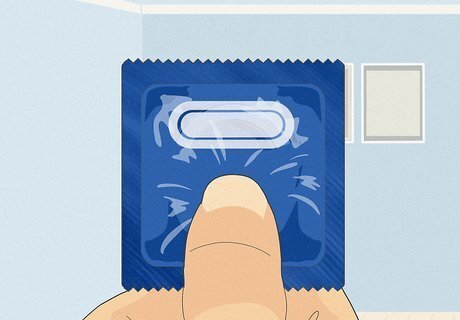
Press on the wrapper. You should feel a little bit of air resistance from inside the package. This means the package has not been torn or punctured and your condom is good to go.
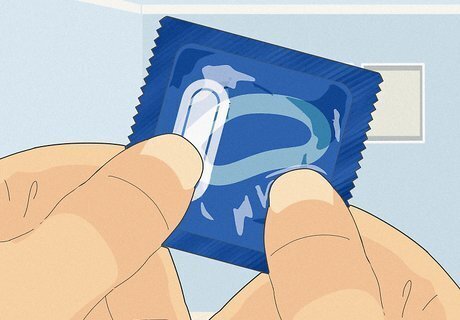
Squish and slide the wrapper to the side. While still pressing on the wrapper, gently push it the condom inside for a side-slide motion. This slight movement indicates that the lubricant inside has not dried out and, as long as the expiry date has not been passed, is still good. This slide test only works for lubricated condoms. Unlubricated condoms will not slide in the package but you can still do the air resistance test. A dried out condom will weaken, crack, and break, exposing you to your partner's fluids, potential pregnancy and sexually transmitted infections.
Keeping That Condom Safe as You Put it On
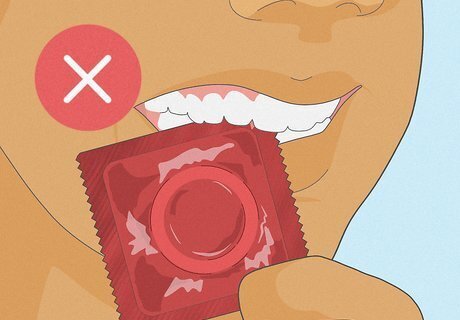
Do not use your teeth. Opening a package with your teeth might be convenient, but tiny rips in the condom can happen that you might not notice before you put it on. Instead, tear open the wrapper by pulling apart the premade notch on one of the corners.
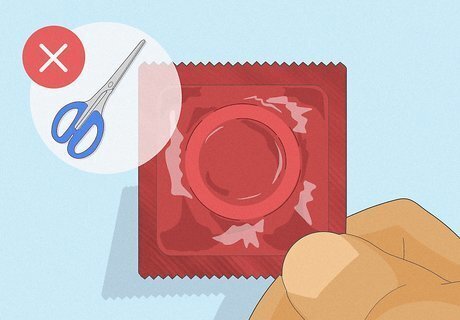
Keep the package away from sharp objects. Never use scissors, knives, or other sharp objects to open the package or you may accidentally puncture the condom.
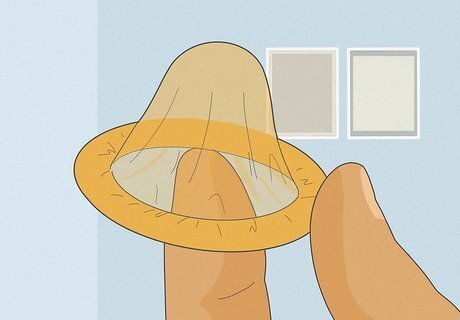
Feel the condom. If it feels dry, stiff, or extra sticky when it comes out of the package, it might not have been stored properly. Discard a dry, sticky, and/or stiff condom and get a new one.
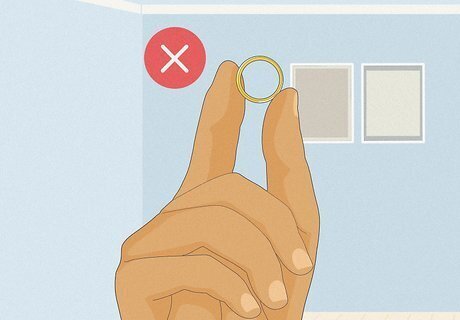
Remove jewelry if it is in the way. Rings and genital piercings can tear a condom, so you may want to remove them before putting on a condom. Also, be careful when putting on a condom if you have sharp nails.
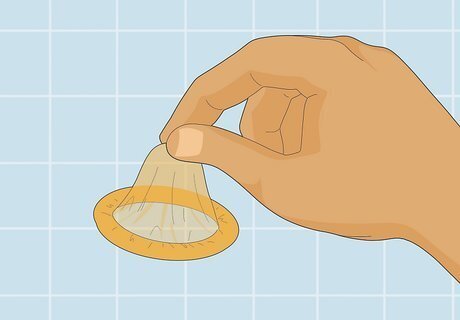
Pinch the tip. Make sure you have squeezed the air out of the tip. Air in the tip of the condom can cause it to burst open and break during use. Squeeze the tip between your forefinger and thumb while you roll the rest of the condom down the penis.
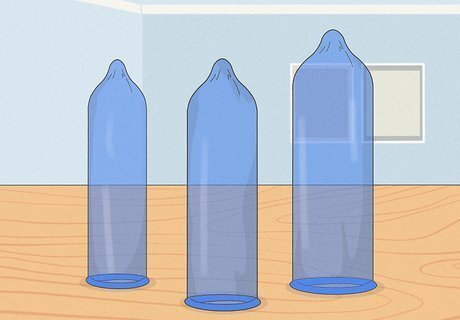
Check your fit. There are a couple of reasons why you need to make sure you have the right sized condom. Your condom should be neither too small nor too big and shouldn't roll back up from the base once you have it on an erect penis. Measure your erect penis to ensure you buy the right size - it might take a few tries to make sure you have the best fit. You need to have room at the tip to catch the semen. That tip that you pinched to squeeze out the air so the condom wouldn't burst has to have room for ejaculate. If you don't have space at the tip, the condom could burst, leaving you and your partner at risk for STIs and pregnancy. The condom can't be too loose so as to move around. A loose-fitting condom allows for movement of fluids or could fall off all together, again putting you and your partner at risk. Measure for fit at home before you buy. Be realistic; don't go for image. “Small” and “large” sizes have more to do with width than length but you can also get shorter or longer condoms, so practice safer sex and choose wisely.
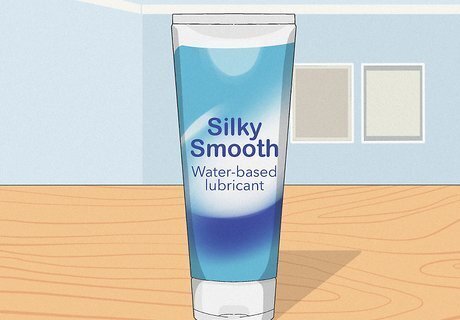
Use a water-based lubricant. Oil-based lubricants can weaken the condom and make it break. Choose a water-based lubricant instead. Don't use oil-based lubricants, baby oil, massage lotion, petroleum jelly, or hand cream as a lubricant.




















Comments
0 comment